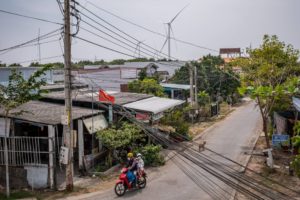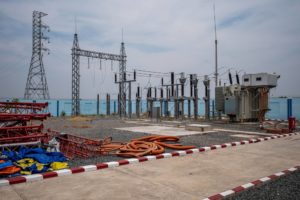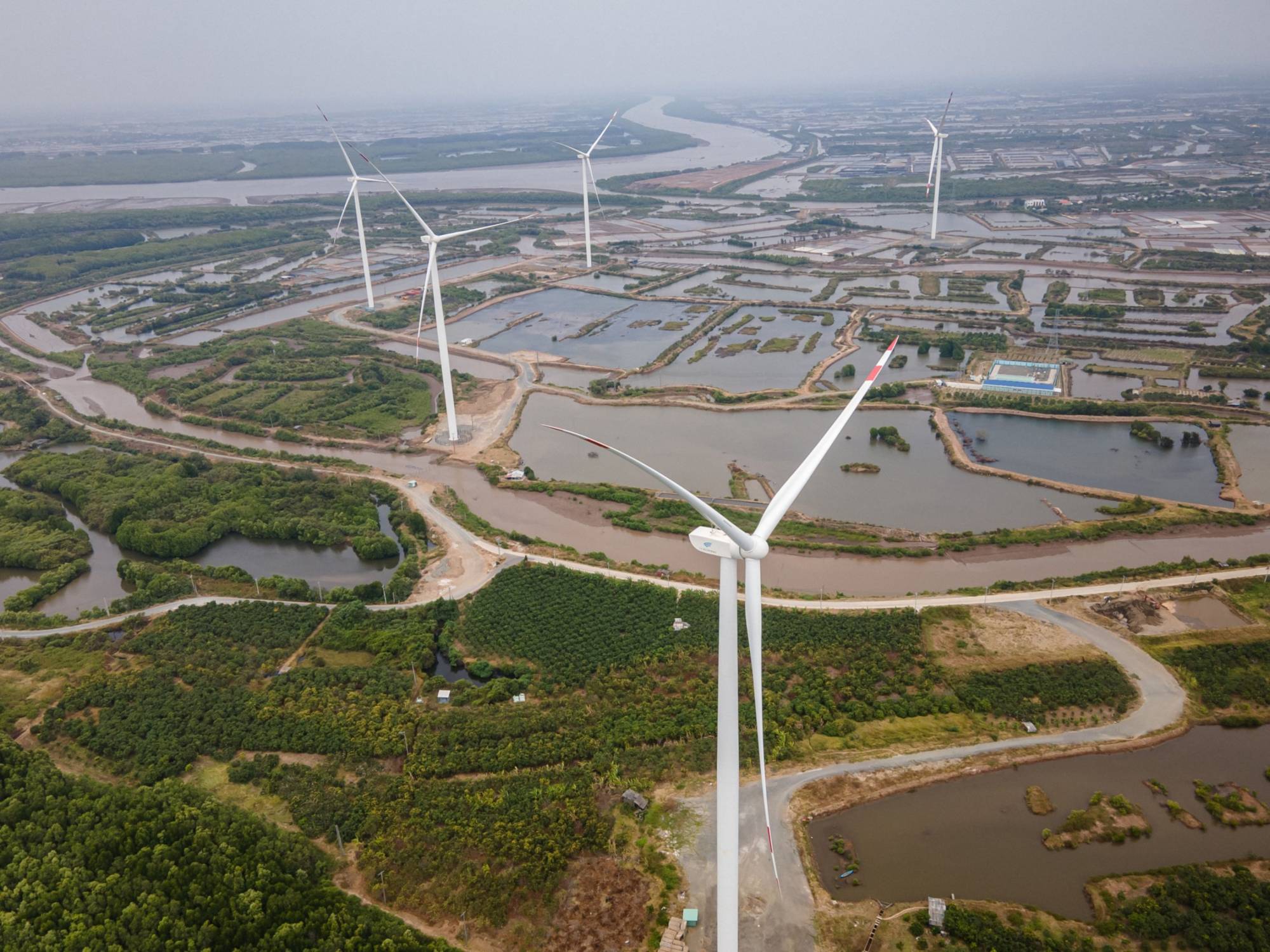
Enough wind power for a major city snarled in Vietnam’s red tape
A cluster of seven wind turbines towering above shrimp ponds and banana trees in Vietnam’s Ben Tre province should have been feeding clean power into the grid by now. Instead, they’ve sat idle for months and become a symbol of the red tape that’s plaguing the development of green electricity in the country.
The stalled wind farm in the Mekong Delta region is one of around 60 delayed projects across the country. There is 3.5 gigawatts of potential energy in turbines that have either been built but are sitting idle, or are still under construction. That’s enough to power 4.4 million households in the fast-developing economy that’s become a manufacturing base for the likes of Apple Inc. and Samsung Electronics Co.
Vietnam should be an ideal location for renewables investment. Its long coastline facing the South China Sea means it’s blessed with the best wind resource in Southeast Asia, while there’s no shortage of demand. Energy consumption is surging as living standards rise, and multinationals with factories there are keen to decarbonize.
All that potential is fast turning to disappointment. A government drive to build more wind farms spurred a rush of investment, but the pandemic meant many developers missed a deadline to get their projects completed and send power to the grid. More recently, an anti-corruption crackdown has paralyzed decision-making and slowed the completion of a long-term power development plan.
Officials at Vietnam’s Ministry of Industry and Trade didn’t respond to several requests for comment.
“It’s a very confusing time for renewable energy development now,” said Hoang Giang, president of Pacifico Energy Vietnam, which invested $65 million in the Ben Tre wind farm. “All the wind projects like us are losing money and we are facing bankruptcy.”

At stake is not only Vietnam’s ability to attract investment into its energy sector and reach its goal of getting to net zero by 2050, but also whether it can maintain its standing as a good place for multinationals to set up factories.
“The risk from renewables is whether supply will be strong enough to support the expansion ambitions of foreign manufacturers,” said David Thoo, a power & renewables analyst at Fitch Solutions.
Vietnam’s wind imbroglio dates back to 2018 when it drove massive interest in the sector by agreeing to buy power at high rates via a system called a feed-in tariff. The only catch was that developers had to get their projects operating commercially before Nov. 1, 2021, to lock in those prices and sell power to the grid.
The resulting wave of investment delivered record wind turbine additions in 2021. But due to virus-driven supply-chain delays roughly the same amount of projects didn’t make the cut-off. The developers are now trying to negotiate pricing plans with state-owned Vietnam Electricity, but the rates being offered aren’t as good and it’s unclear how long discussions will take.
“The new price is too low,” said Pacifico’s Giang. “We can accept a reasonable profit, but not losing money.”
The government’s anti-graft campaign, which first started to hit markets about a year ago, is now making the situation harder to resolve as bureaucrats become increasingly wary of making decisions amid fears — warranted or not — they could be implicated.
Meanwhile, renewables companies are unable to get any investment certainty until Vietnam releases its long-delayed energy strategy through 2030, known as Power Development Plan 8. It isn’t expected to be approved this year and that could stall projects even further, according to Caroline Chua, an analyst at BloombergNEF.

The government is also dragging its feet on rules to allow companies to sign so-called direct power purchase agreements, which let them buy long-term supplies directly from a green energy project.
Vietnam is the largest renewables market in Asia for Energias de Portugal SA, but the company doesn’t see any way to make progress on projects in the short term, said Pedro Vasconcelos, Asia Pacific chief operating officer for EDP.
While the problems for renewables developers in Vietnam have a distinctly local flavor, they’re also part of bigger issues threatening to slow the energy transition around the world. Bottlenecks and red-tape are delaying wind and solar projects, while grids also need massive investment to cope with new and intermittent sources of energy that are often distant from demand centers.
“The problem right now is it’s almost impossible to get anything approved,” said John Rockhold, president of Pacific Rim Investment and Management, which develops energy projects in Vietnam. “Everyone is extremely cautious.”
Source: https://www.japantimes.co.jp/news/2023/03/21/business/idle-wind-turbines-vietnam-red-tape/


